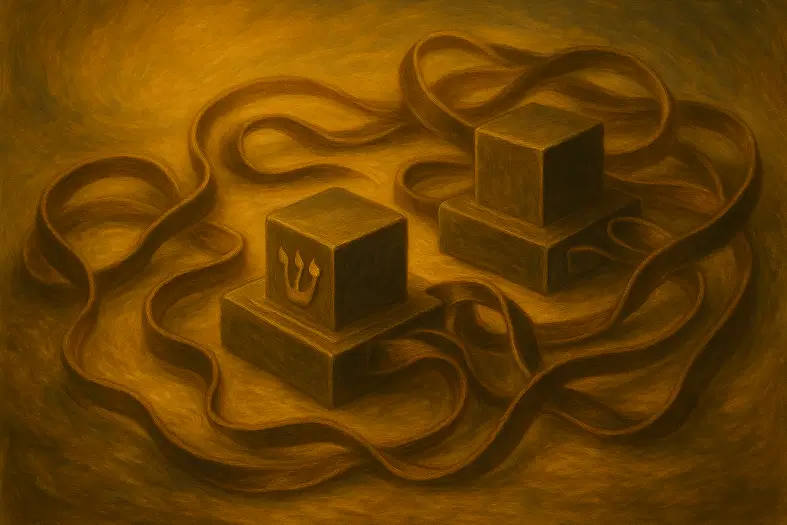


Place the tefillin shel rosh above the forehead (“between the eyes”) as a visible covenantal sign, proclaiming Hashem’s unity, remembering the Exodus, and dedicating the mind and intellect to Hashem.
This mitzvah commands the donning of tefillin shel rosh, worn on the head above the forehead “between the eyes.” The tefillin house four parshiyot from the Torah (Exod. 13:1–10, Exod. 13:11–16, Deut. 6:4–9, Deut. 11:13–21) that proclaim Hashem’s unity, the Exodus, and our covenant. Rambam (Hilchot Tefillin 4:1–3) distinguishes the head and arm tefillin as two separate mitzvot, each requiring its own blessing. The Talmud (Menachot 35b–36a) establishes the precise placement of the shel rosh, which must rest at the hairline above the forehead, with the knot at the back of the head. Sefer HaChinuch (Mitzvah 421) teaches that the shel rosh sanctifies the intellect, directing thought and consciousness toward Torah and faith. Rashi (Exod. 13:16) and Ramban (Deut. 6:8) emphasize that tefillin serve as a constant reminder of Hashem’s greatness and covenant, publicly visible on the head as a “crown” of Israel’s sanctity.
Commentary & Classical Explanation:
Contrast with Mitzvah 78 (The Kohanim must bless Israel daily):
Parallel with Mitzvah 80 (Tefillin on the arm):
Mindfulness and Daily Alignment
Public Jewish Identity
Cognitive Discipline
Spiritual Defense
Dreams and Tefillin


Signifies awe and reverence toward Hashem—living with awareness of His greatness and presence.
Represents the concept of spiritual intentionality, purity, and sanctity—set apart for a higher purpose.
Denotes the oneness and indivisibility of G‑d—affirming there is no other power or force besides Him.
Represents Emunah—the deep, inner trust in Hashem’s presence, oneness, and constant involvement in our lives. This badge symbolizes a heartfelt connection to G-d, rooted in belief even when we cannot see. It is the emotional and spiritual core of many mitzvot.
Reflects mitzvot rooted in love—of G‑d, others, and the world we are entrusted to uplift.
Tied to the eternal covenant between G‑d and the Jewish people, including signs like brit milah and Shabbat.
Represents sanctifying G‑d’s Name—even to the point of self-sacrifice when necessary.
Mitzvot that strengthen communal life — showing up, participating, supporting, and belonging. Community is where holiness is shared, prayers are multiplied, and responsibility becomes collective.
Mitzvot that define and deepen the relationship between a person and their Creator. These include commandments involving belief, prayer, Shabbat, festivals, sacrifices, and personal holiness — expressions of devotion rooted in divine connection.
Relates to internal intentions, beliefs, and mindfulness in performing mitzvot or avoiding transgressions.

Dive into mitzvot, prayer, and Torah study—each section curated to help you learn, reflect, and live with intention. New insights are added regularly, creating an evolving space for spiritual growth.

Explore the 613 mitzvot and uncover the meaning behind each one. Discover practical ways to integrate them into your daily life with insights, sources, and guided reflection.

Learn the structure, depth, and spiritual intent behind Jewish prayer. Dive into morning blessings, Shema, Amidah, and more—with tools to enrich your daily connection.

Each week’s parsha offers timeless wisdom and modern relevance. Explore summaries, key themes, and mitzvah connections to deepen your understanding of the Torah cycle.